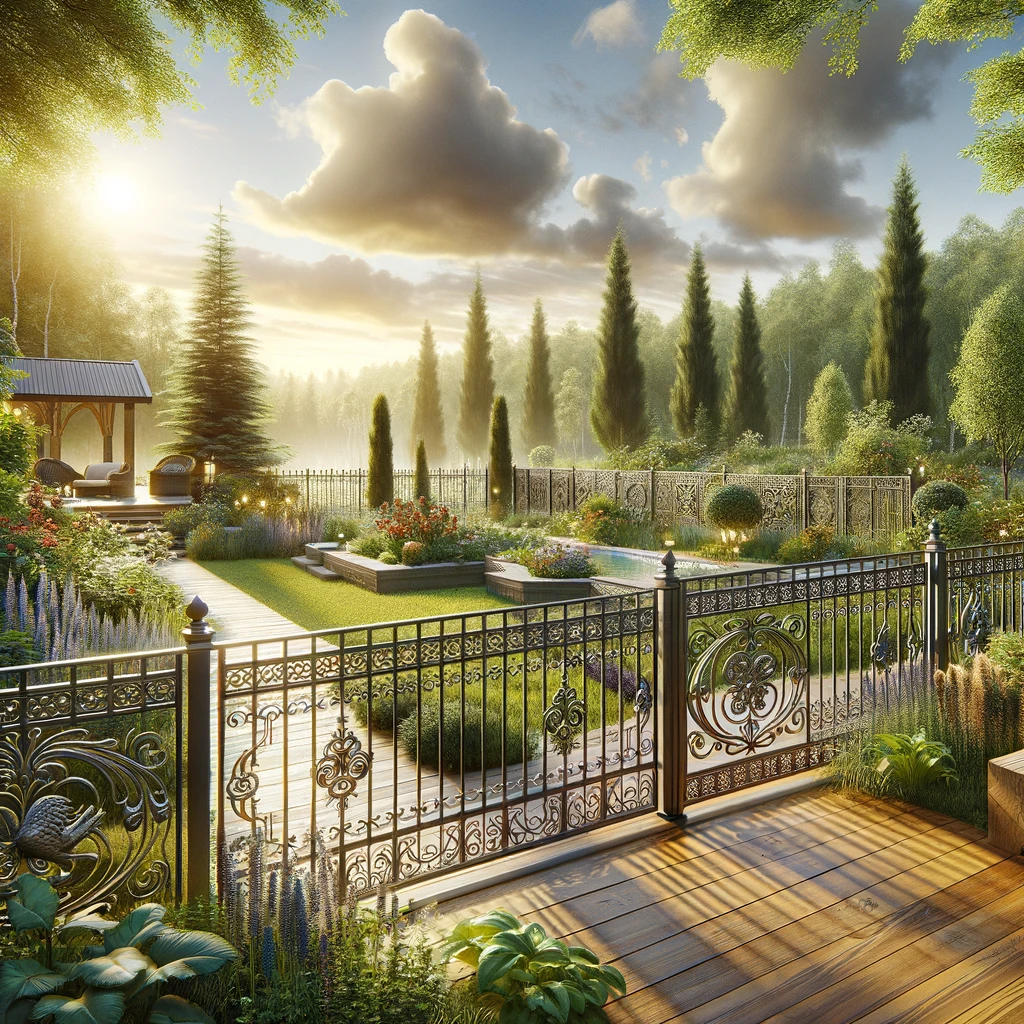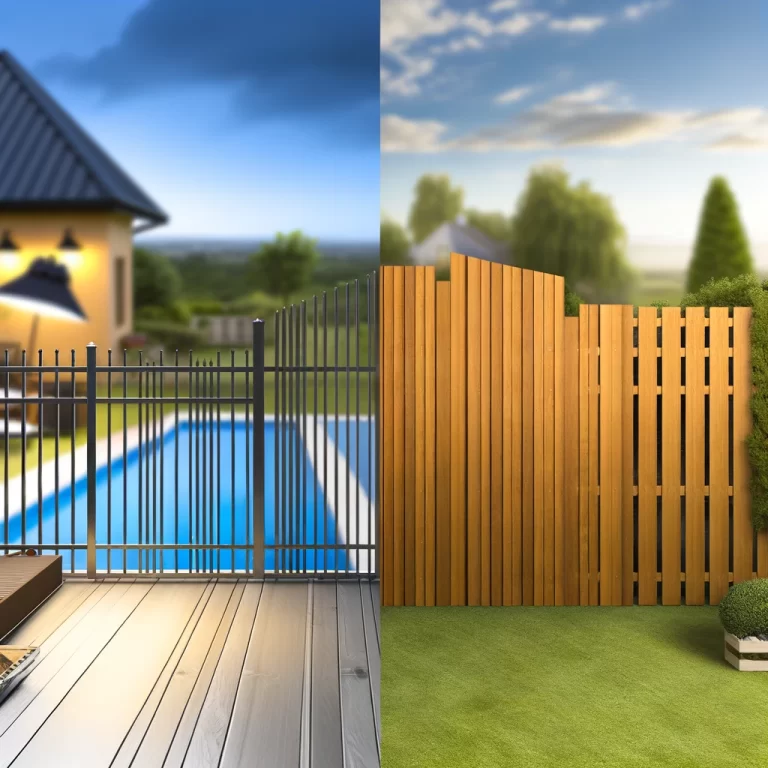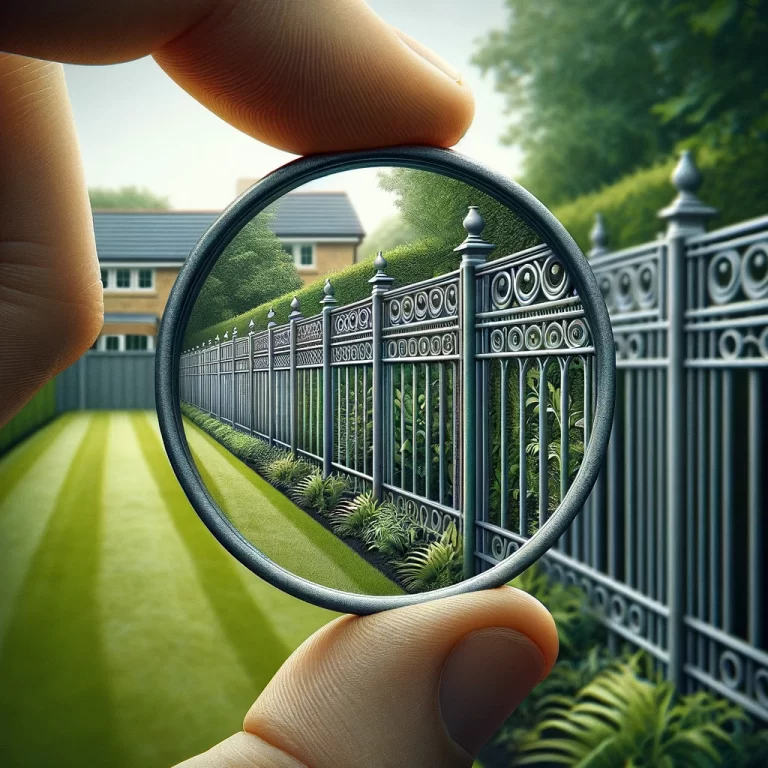Thinking about fencing your property but not sure how much it will cost or what factors will affect the price? In this article, we will explore the reasons why people choose to fence their properties, the factors that can impact the cost of fencing in the UK, the average cost of fencing, the different types of fences available, tips on how to save money on fencing costs, and the legal requirements you need to be aware of. Let’s dive in and find out everything you need to know about fencing in the UK.

Fencing properties serve various purposes, including enhancing security, providing privacy, boosting aesthetics, and increasing property value.
One of the primary reasons people opt for fence installation is to enhance the security of their properties. By having a well-built fence around one’s premises, homeowners can create a barrier that deters intruders and unwanted visitors, offering peace of mind and a sense of protection for their families and belongings.
Fences also play a vital role in providing privacy. With the right fence design, individuals can create a secluded space where they can relax, entertain, or enjoy their garden without being exposed to passers-by or neighbours. This increased privacy adds a level of comfort and exclusivity to a property, enhancing its overall appeal.
From an aesthetic perspective, fences contribute significantly to the visual appeal of a property. They can define boundaries, complement landscaping features, and add character to the overall look of a home. By choosing a fence design that aligns with the style and architecture of the property, homeowners can create a cohesive and attractive exterior.
Fencing can have a positive impact on the property value. A well-maintained and visually appealing fence can increase the kerb appeal of a home, making it more attractive to potential buyers and potentially raising the resale value. It signifies that the property is well-cared for and adds a desirable feature that can set it apart in a competitive real estate market.
Security and Privacy
Fencing properties enhances security by establishing clear boundaries and provides privacy for homeowners, contributing to increased property value.
A well-maintained fence not only adds to the aesthetic appeal of a property but also acts as a deterrent to intruders, safeguarding the home and its inhabitants. Fence ownership plays a crucial role in maintaining the condition of the fence, ensuring its functionality in enhancing security measures. The element of garden privacy that a fence offers allows homeowners to enjoy outdoor spaces without the intrusion of prying eyes, creating a serene retreat within the property boundaries.
Aesthetics
Fences contribute to the aesthetics of a property, offering various design options that enhance visual appeal and potentially increase property value.
When considering fencing options to elevate the overall look of your property, it’s essential to pay attention to the fence aesthetics. A well-chosen fence design can seamlessly blend with the existing landscape, whether you have a sprawling garden or a compact urban yard. Aesthetically pleasing fences not only frame the property but also provide a sense of boundary and security.
Materials play a crucial role in achieving the desired look. Wood fences, for example, offer a traditional charm that complements lush greenery, while sleek metal fences provide a modern touch that suits contemporary architectural styles. Alternatively, a combination of materials like wood and iron can create a unique visual appeal.
What Factors Affect the Cost of Fencing in the UK?
Several factors influence the cost of fencing in the UK, including material choices, labour expenses, and installation requirements.
When estimating the cost of fence installation, fencing materials play a significant role. The type of material selected, such as wood, vinyl, metal, or composite, can greatly impact the overall cost. Fencing post costs also contribute to the total expenses. Whether you opt for wooden posts, metal posts, or concrete posts, each choice comes with its own price tag. Labour charges constitute a substantial portion of the budget. The complexity of the installation process, including the size of the area and any obstacles present, can affect the fencing installation costs.
Material
The choice of material significantly impacts the overall cost of fencing, with options like timber, concrete, metal, and vinyl offering varying price points.
Timber fences are a popular choice due to their natural aesthetic, but they require regular maintenance, including treatments and repairs, which can add to the long-term financial commitment.
Concrete fences, on the other hand, are durable and low-maintenance, offering a cost-effective solution in the long run despite higher initial installation costs.
Metal fences provide a balance between durability and aesthetics, with variations in pricing depending on the type of metal used – steel being more expensive than aluminum.
Vinyl fences are known for their durability and minimal maintenance requirements, making them a higher initial investment but lower long-term cost option.
Height and Length of Fence
The height and length of the fence play a crucial role in determining the total cost of installation, with taller or longer fences requiring more materials and labour.
When choosing fence types, considering the dimensions is essential. For instance, a chain-link fence will have different installation costs compared to a wooden privacy fence due to the materials required. Additionally, fence panel sizes can impact the overall cost significantly. Larger panels may reduce installation time but could be more expensive per panel. The fence installation process itself will vary in cost based on the complexity of the design and the height and length of the fence being erected.
Type of Fence
Different fence types, such as woven, hurdle, and chain link fences, come with distinct price tags, affecting the overall fencing cost in the UK.
When considering fence design for your property, the cost variations among these three popular fence types can play a significant role in your decision-making process. Woven fences, known for their durability and aesthetic appeal, tend to be on the higher end of the price spectrum due to their intricate patterns and high-quality materials.
On the other hand, hurdle fences, with their traditional look and natural materials, often offer a more budget-friendly option compared to woven fences. Lastly, chain link fences are typically the most cost-effective choice, providing durability and security at a lower price point.
Labour Costs
Labour costs for fence installation, removal, and repairs significantly contribute to the total expenses, making it essential to consider these aspects when budgeting for fencing projects.
When planning a fencing project, it’s crucial to account for the labour expenses involved in the entire process. The installation of a fence requires skilled labour to ensure proper alignment, stability, and security.
Fence removal also entails labour costs for dismantling and disposing of old materials in a systematic manner.
In terms of repairs, hiring professionals to fix damages promptly can prevent costly issues down the line. Proper understanding and allocation of labour costs are key to the successful completion of any fencing project.

What Is the Average Cost of Fencing in the UK?
The average cost of fencing in the UK varies depending on factors like material choice, installation prices, repair expenses, and the quality of fence post materials.
In terms of material costs, timber fences tend to be more affordable initially but may require higher maintenance costs over time compared to metal or composite materials.
Installation prices can significantly impact the overall expenses, with professional installation services typically ranging from £400 to £1200 depending on the size and complexity of the project.
In terms of repair fees, it’s essential to budget for occasional maintenance to ensure the longevity of your fence.
One crucial aspect often overlooked is the quality of fence post materials, as sturdy posts are essential for the structural integrity and durability of the entire fence.
Average Cost per Metre
The average cost per metre for fencing installations in the UK depends on factors such as material choices, fence types, and associated post costs.
In terms of fencing materials, the selection can significantly impact the total cost. For example, timber fences offer a classic look but may require more maintenance compared to metal or vinyl options. The cost per metre for materials can range from £20 to £60, depending on the quality and type selected. Additionally, fencing post costs should be factored in, with prices for wooden posts ranging from £5 to £15 each, while concrete posts can go up to £30 per post. Therefore, the average cost for fencing projects in the UK varies from £50 to £120 per metre, taking into account these material and post cost considerations.
Average Cost for Different Types of Fences
The average cost for different fence types, including wooden, metal, and vinyl fences, varies based on material prices, installation complexity, and maintenance requirements.
Wooden fences are a popular choice, known for their classic aesthetic appeal and durability. The average cost for installing a wooden fence can range from £15 to £40 per linear foot, depending on the type of wood used. Cedar and redwood fences typically cost more than pressure-treated pine options.
Metal fences, such as aluminium or wrought iron, offer a sleek and modern look. The average cost for metal fences falls in the range of £20 to £50 per linear foot due to the higher material costs and installation intricacies.
On the other hand, vinyl fences are low-maintenance and long-lasting. The average price for vinyl fencing is around £25 to £40 per linear foot, making it a mid-range option in terms of cost.
What Are the Different Types of Fences Available in the UK?
Various types of fences are available in the UK, including wooden, metal, vinyl, and chain link options, each offering unique features and aesthetic appeal.
Wooden fences are a popular choice for their classic look and natural warmth, blending well with different architectural styles. They can be stained or painted to match the surroundings and are relatively easy to install.
On the other hand, metal fences are known for their durability and security features, offering a sleek and modern appearance.
Vinyl fences, resistant to rot and corrosion, require minimal maintenance and come in various colours and styles, making them versatile options.
Chain-link fences, though less decorative, are cost-effective and durable, often used for security and boundary purposes.
Wooden Fences
Wooden fences remain a popular choice in the UK, offering versatility in styles, timber selections, and supply-only cost options.
One of the main appeals of wooden fences is the wide range of style options they provide. From classic picket fences to more modern horizontal slat designs, there is a style to suit every aesthetic preference. The variety of timber options available ensures that homeowners can choose a material that matches their desired look and durability needs.
- Spruce, pine, cedar, and redwood are popular timber choices known for their natural beauty and longevity.
- When considering the cost, the supply-only option for wooden fences is often more economical as it eliminates installation fees, making it a cost-effective choice for budget-conscious individuals.
Metal Fences
Metal fences provide durability, weather resistance, and aesthetic appeal, contributing to property value and enhancing outdoor spaces in the UK.
One of the key advantages of metal fences is their ability to withstand various weather conditions, such as rain, wind, and snow, making them a reliable choice for outdoor spaces. Their sturdy construction and corrosion-resistant properties make them a long-lasting fencing solution that requires minimal maintenance over time. The wide range of fence designs available in metal materials allows homeowners to choose styles that complement their property’s architecture, further enhancing its overall appearance and kerb appeal. These aesthetic enhancements can significantly increase the value of a property, making metal fences a popular choice for both residential and commercial properties in the UK.
Vinyl Fences
Vinyl fences offer low maintenance requirements, extended lifespan, and the flexibility for comparison shopping, making them a popular choice for UK homeowners.
One of the key benefits of opting for a vinyl fence is the low maintenance requirements it offers. Unlike traditional wood or metal fences, vinyl fences do not require frequent painting or staining to maintain their appearance. This not only saves homeowners valuable time and effort but also reduces long-term maintenance costs.
Another advantage of vinyl fences is their extended lifespan. Vinyl is a durable material that is designed to withstand various weather conditions without rotting, warping, or deteriorating. This means that once installed, homeowners can enjoy their vinyl fence for many years to come.
The flexibility for comparison shopping makes selecting a vinyl fence even more convenient. With an array of styles, heights, and colours available, homeowners can easily compare different options to find the perfect match for their property and personal preferences.
Chain Link Fences
Chain link fences offer a balance of security, visibility, and value, making them suitable for various applications where both privacy and safety are essential.
One of the standout features of chain link fences is their excellent fence security capabilities. The sturdy interwoven wires create a formidable deterrent against intruders, adding a strong layer of protection to properties. The open design of chain link fences ensures unobstructed visibility, allowing property owners to monitor activities both inside and outside the fenced area easily. Alongside providing security and visibility, these fences offer great fence value due to their cost-effectiveness and low maintenance requirements, making them a practical choice for many homeowners and businesses.
How Can I Save Money on Fencing Costs?
Saving costs on fencing projects in the UK can be achieved by considering DIY options, cost-effective materials, and efficient repair strategies.
Opting for the DIY approach is one effective way to reduce expenses. By taking on the installation yourself, you can eliminate labour costs and tailor the fence to your exact specifications.
Choosing budget-friendly materials is another key factor to keep costs low. For example, treated pine can be a cost-effective alternative to cedar without compromising durability.
In terms of repairs, tackling minor issues promptly can prevent larger, more costly problems down the line. Implementing simple repair solutions, such as fixing loose boards or tightening hinges, can help you save on fence repair costs in the long run.
Choose a More Affordable Material
Opting for a more affordable fencing material, such as timber, concrete, or vinyl, can significantly lower overall project costs while maintaining quality.
When considering the selection of fence materials for your project, it’s crucial to weigh the cost benefits of each option. Timber, for instance, is a popular choice due to its affordability and versatility. Concrete, on the other hand, offers durability and low maintenance requirements that can save money in the long run. Vinyl fences, known for their cost-effectiveness and easy installation, provide a balance of quality and budget-friendliness.
By opting for these affordable materials, you not only reduce initial expenses but also minimise the need for frequent repairs or replacements, resulting in long-term savings. It’s important to remember that the choice of affordable material has a direct impact on the overall expenses involved in your fencing project.
Opt for a Smaller Height and Length
Reducing the height and length of a fence installation can lead to cost savings, particularly when selecting smaller fence types or adjusting panel sizes.
When considering the cost implications of a fence project, it’s important to understand how different factors like height and length can affect the overall expenses. By opting for smaller fence types, such as picket fences or garden fences, you can not only reduce the materials required but also the labour and installation costs involved. Adjusting the panel sizes to fit specific dimensions can further optimise the budget without compromising on the aesthetics or functionality of the fence. It is crucial to meticulously plan the dimensions and materials used to ensure a cost-effective yet sturdy fence installation.
Consider DIY Installation
Undertaking a DIY approach for fence installation can lead to substantial savings on labour costs, provided individuals are equipped to handle the task effectively and safely.
One significant advantage of DIY fence installations is the flexibility it offers in terms of selecting the materials and design that suit your preferences and budget. This freedom allows you to customise the fence to match the aesthetic of your garden while keeping costs under control.
Opting for a DIY method enables homeowners to have full control over the entire installation process, ensuring every step is completed to their satisfaction. Rather than relying on external contractors, you can work at your own pace and schedule, minimising disruptions to your daily routine.
What Are the Legal Requirements for Fencing in the UK?
Understanding the legal obligations for fencing in the UK is crucial, encompassing aspects like planning permissions, building regulations, and adherence to property boundary guidelines.
In the UK, before initiating any fencing project, it is essential to determine whether you need planning permission or if the project falls under permitted development rights. Planning permission is typically required when the fence is over 2 metres in height or if it adjoins a highway. If your fence is under 2 metres in height and not near a highway, it may fall under permitted development.
Compliance with building regulations is vital to ensure the safety and structural integrity of the fence. Regulations may vary based on factors like the fence’s height and location. Maintaining accurate garden boundaries is crucial to avoid potential disputes with neighbours and ensure property delineation.
Planning Permission
Obtaining planning permission before fence installation in the UK is essential to ensure compliance with regulations and avoid potential issues that may impact property value.
Securing planning permission for fencing projects in the UK is crucial for several reasons. It ensures that the type of fence you intend to install meets the local council’s guidelines and regulations, helping you avoid any penalties or legal complications. Failure to obtain the necessary permissions can result in enforcement actions, fines, or even requests to remove the fence altogether.
Having planning permission can significantly enhance the property value of your home. A properly installed and approved fence can not only improve the aesthetics of your property but also add to its overall curb appeal and desirability in the market.
Building Regulations
Adhering to building regulations in the UK for fence construction ensures structural integrity, safety compliance, and the use of approved materials and designs.
When constructing a fence in the UK, following the building regulations is paramount to guaranteeing the safety and wellbeing of individuals on the premises. These regulations are specifically designed to uphold rigorous safety standards, ensuring that the fences not only provide security but also do not pose any hazards to those around them. By adhering to these standards, one can be confident that the fence is constructed with robustness and durability in mind, meeting all necessary safety requirements.
Compliance with building regulations also extends to the materials used in fence construction. Approved materials not only contribute to the longevity of the fence but also play a crucial role in maintaining structural strength over time. This adherence to material specifications ensures that the fence remains sturdy and resilient, even in challenging weather conditions.
The regulations dictate certain design requirements that must be met to enhance both the aesthetic appeal and functionality of the fence. Proper fence design is essential not just for visual purposes but also for ensuring that the fence serves its intended purpose effectively. Compliance with design standards helps in creating fences that blend seamlessly with the property while offering optimal security and privacy.
Boundary Disputes
Resolving boundary disputes related to fence ownership is critical to maintaining property value, preserving garden privacy, and fostering positive neighbourly relationships.
When neighbours have disagreements over fence lines and who owns the fence, it can lead to misunderstandings and strained relationships. Unresolved disputes can have a negative impact on the aesthetic appeal of the properties involved, affecting their overall value. By resolving these issues promptly and amicably, both parties can ensure that the boundaries are clearly defined, thus enhancing property values and maintaining the desired level of garden privacy.






